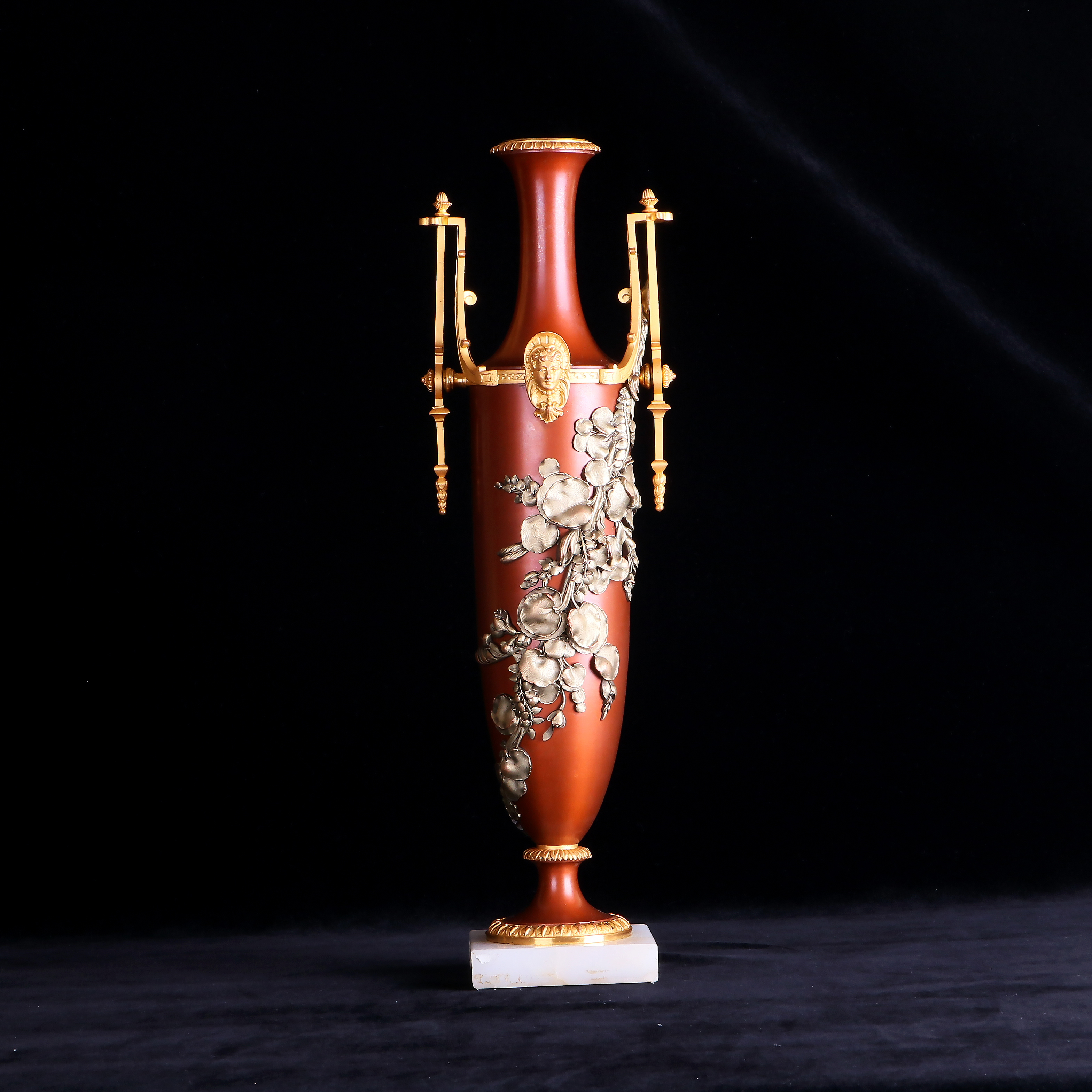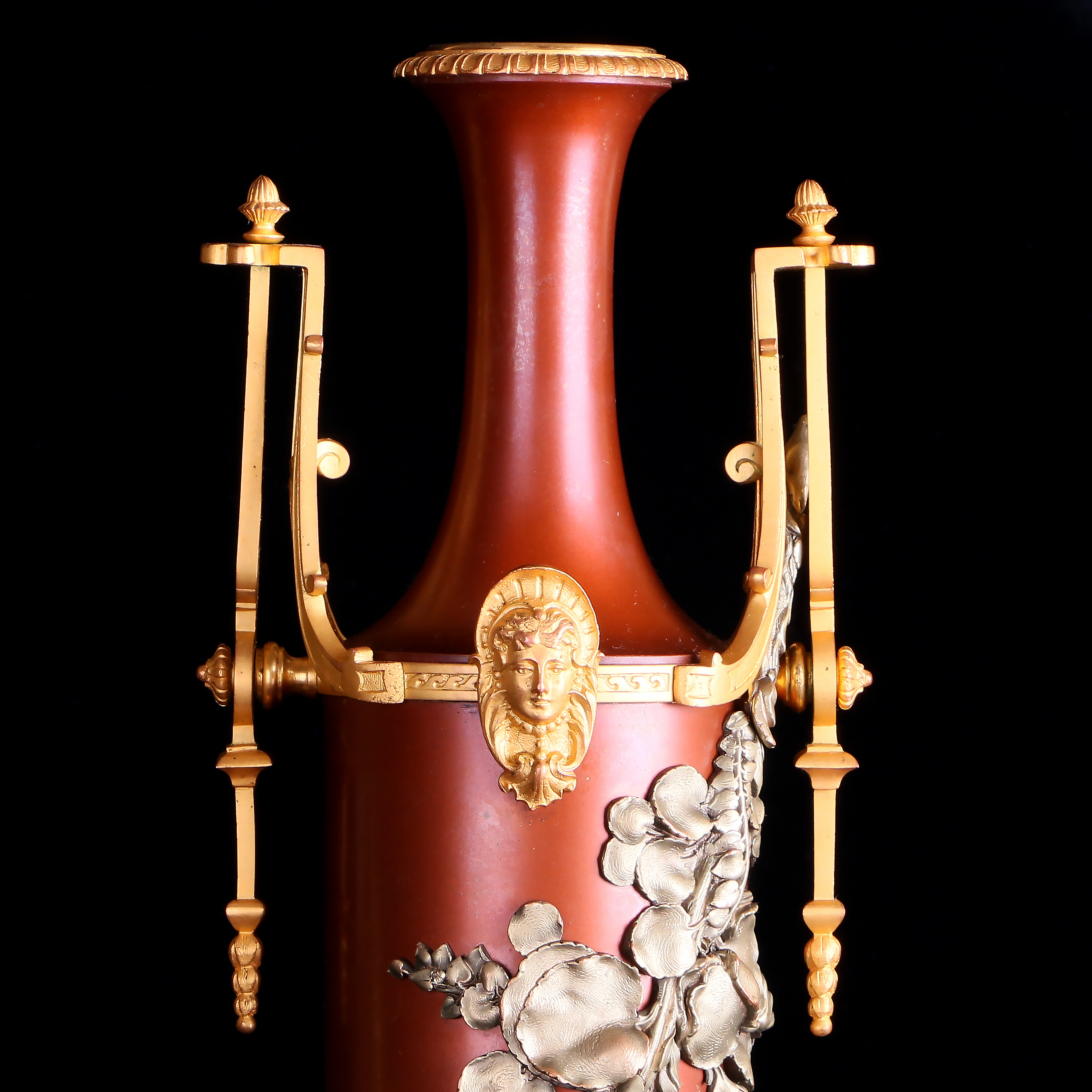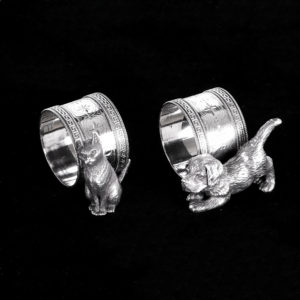描述
Charles Christofle在1830年承繼了他父親在巴黎的珠寶店並且馬上擴大,到了1842年他買下了英國製銀所Elkington的某一個度模樣式並且開始在法國生產,到了1847年以他為名的公司成為法過最大的製銀工坊,並且是由拿破崙三世所贊助,以文藝復興時期風格為主的餐用銀器與其他器皿,其中也包含了路易十五十六時期的風格。
他們最具創新與最重要的設計是來自於Émile Reiber之手,這位首席設計師也就是後來Christofle的藝術總監,在他一手策劃下公司開始用一系列揉合了日本元素的歐式餐具,也就是被稱作了“Japonisme”的特殊銀器。
Émile Reiber年輕時曾做過Abel Blouet的學徒,學習如何整修維護古老建築,他曾參與的重要修繕有市政廳與著名的阿爾科萊喬(法國與義大利的邊境之戰場所),在這之後他開始全身投入在所謂的裝飾藝術,他與陶瓷工藝大師Theodore Deck配合,負責瓷器最後的修飾。在1865年被Christofle挖角成為他們的藝術總監,在1874年他獲得中央聯合裝置藝術協會的大獎。
在1875~1878年間他以複雜精美的設計與令人驚豔的華麗裝飾製作一系列銀器,他的靈感來源有中國,日本,印度以及波斯。Émile Reiber尤其熱衷於所謂的和風也就是日式文化。在他製作的設計原型中常常看到很多帶有東方色彩的裝飾跟技術,讓銀餐具與餐桌文化帶來嶄新的生命力,從古老的日本與中國文化萃取精華再利用工業革命的新技術將合金做表面處理,經由反覆試驗終於成功將表面上色,這一成功的創舉不僅極具收藏性,更在1873年的維也納與1878年的法國萬國博覽會上大放異彩引起世界各國的關注與高度好評。
Champlevé技法的特色與介紹
Description and Characteristics of Champlevé Enamelwork
Like cloisonné enamelling, champlevé is designed to add colour and glitter to metalwork, by creating small “compartments”, which are then filled with vitreous (glass-like) enamel or inlays of precious stones and heated to fusion-point in a kiln. Once the enamel or stone inlay has cooled, it is smoothed with pumice stone and polished. However, unlike cloisonné – which involves the creation of partitions above the surface of the metal object – the champlevé technique involves the creation of depressions or troughs below the surface – one reason why its name, which means “raised field” in French, is so confusing! The metal lines left untouched between the troughs serve as partitions. Because it is relatively easy to vary the width of the trough, the champlevé method provides for a greater variety of design than that achieved by cloisonné. Although seen in jewellery art made during Classical Antiquity, it was only during the era of Celtic art (from about 400 BCE onwards) that the technique became consistent and widespread. Indeed, Celtic metalwork art exerted a significant influence on Irish Monastic Art (500-1200) as well as early Christian art created in monasteries across England. (For more, please see also: Celtic Jewellery art.) However, the champlevé process is most associated with Romanesque art from the eleventh century onwards, when it was applied to reliquaries, caskets, plaques and vessels, as well as liturgical crosses and a variety of jewellery. It was also used in the making of illuminated manuscripts, to embellish bindings and covers. Later variants include the more translucent basse-taille technique. Famous items created using champlevé enamelling include: the Stavelot Triptych (1158) and the Becket Casket (1180-1190).
Champlevé是一種被用於裝飾金屬器具的技法,與Cloisonné技法類似,兩者都是使用琺瑯顏料上色。該技法也被用於增強金屬表面的光澤,同時也可以用於鑲嵌寶石。在Champlevé的製程裡,工匠先將選用的琺瑯顏料及寶石以手繪的方式塗抹在金屬表面上,並加熱至熔點後,再使其冷卻,最後以浮石將其打磨直到表面光滑平順。與Cloisonné不同的是,Cloisonné技法的成品通常顏色分明,而且在每個顏色間有明顯的金屬分隔線。也就是說,金屬邊線是用於分隔不同顏色的琺瑯顏料,因此Cloisonné在表現上 顏色的對比較為Champlevé強烈。至於Champlevé技法的原理,則是在欲上色金屬表面上預先做出造型並且凹陷的模子,然後直接在其模子上色。所以在Champlevé技法中,琺瑯顏料在繪製途中有可能會產生漸層和混色的效果,因此Champlevé的表現較為多變化且生動自然。其實早在古希臘時期,使用法郎上色的技術就被使用於製作珠寶上,並在塞爾提克時期將其技術發展至成熟,而該技術也間接影響了後來的愛爾蘭馬賽克藝術以及基督藝術。在十一世紀,champlevé技法常常被使用於羅曼式風格的藝術品,常見於 珠寶、收納箱、棺材、裝飾品、各式容器等等,也常見於宗教用品上。另外在部分珍貴手抄本的封面也使用琺瑯畫來作為裝飾。在之後則開始使用質地較為透明的琺瑯顏料來作畫,較有名的champlevé例子包括:The Stavelot Triptych (1158) 和 The Becket Casket (1180-1190) 。












